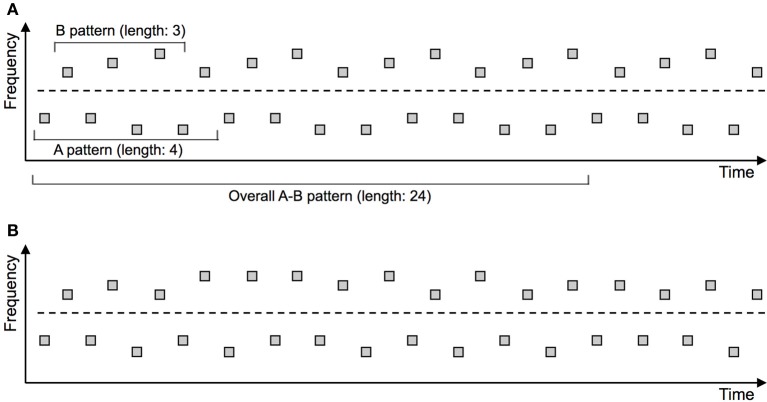Figure 2.
Experimental paradigm disentangling predictability of the “Integrated” and “Segregated” perceptual organizations. The depicted stimulus arrangements are predictable (A) or unpredictable (B) with respect to stimulus frequency. The cyclically repeating (thereby predictable) frequency patterns are marked in the upper panel. The dashed line indicates the (nominal) separation between the “A” and “B” groups of tones. Critically, the number of elements included in the predictable patterns differs between the “A” and “B” group of tones. As a result, the length of the cyclically repeating overall pattern comprising “A” and “B” tones amounts to 24 elements, which is considerably too long to be picked up by the auditory system (e.g., Boh et al., 2011). Consequently, from a perceptual point of view the predictability manipulation is directional: It affects only predictability of the “Segregated” perceptual organization, whereas predictability of the “Integrated” organization remains unchanged. This directional manipulation allows for an unambiguous investigation of predictability effects in ASA (e.g., Bendixen et al., 2010, 2013a).

